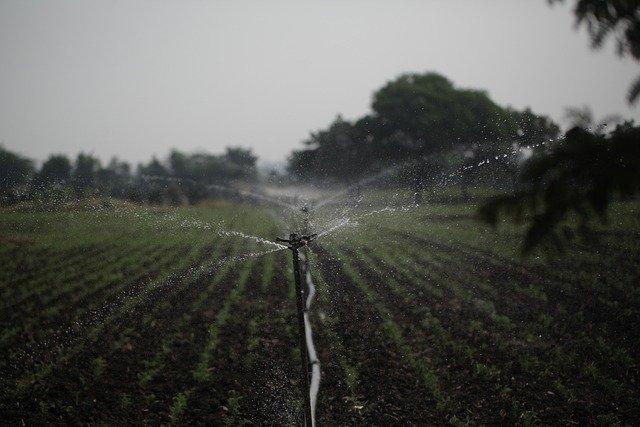Farms: Irrigation and water strategies for gardens and lawns
Farms manage a wide range of living systems, and water is central to their productivity and resilience. Effective water management balances crop needs, soil health, cost, and environmental impact. Whether the focus is on field crops, orchards, vegetable beds, or small lawned areas, the right combination of irrigation methods, scheduling, and infrastructure improves yield and reduces waste while supporting biodiversity and long-term soil structure.

How does irrigation support farm growth?
Irrigation delivers water to crops when rainfall is insufficient, extending growing seasons and stabilizing yields. On farms, irrigation systems range from simple furrows and hand watering to more complex drip lines and center-pivot systems. Each method influences soil moisture distribution, root development, and nutrient availability. Choosing a system depends on crop type, soil texture, slope, and labor availability, and it often requires trade-offs between installation cost and long-term water-use efficiency.
Irrigation scheduling—using soil moisture sensors or evapotranspiration data—ensures water is applied when plants need it most, reducing stress and limiting disease pressure associated with overwatering.
How can a farm garden be designed for water efficiency?
Designing a farm garden with water efficiency in mind starts with soil improvement and plant selection. Amending soil with organic matter increases its water-holding capacity, reducing irrigation frequency. Grouping plants by water needs (hydrozoning) prevents over- or under-watering adjacent beds. Mulches, shade cloth, and windbreaks lower evaporation and protect tender seedlings, while raised beds can improve drainage and root aeration.
Complementary practices such as installing drip irrigation for beds, capturing rainfall in barrels, and using native or drought-tolerant species where appropriate make a farm garden both productive and resilient under variable water supplies.
How should lawn areas on farms be maintained and watered?
Lawn patches on farms—used for livestock access, recreation, or aesthetic reasons—benefit from deep, infrequent watering that encourages robust root systems. Mowing at higher cuts reduces turf stress and evaporation, while aeration and occasional overseeding maintain density and reduce weed invasion. For watering, set sprinkler systems or timed irrigation to deliver water early in the morning to minimize evaporative losses and fungal issues.
Where practical, replace high-maintenance turf with clover mixes or native grasses that require less water and fewer inputs; this can lower labor and irrigation demands without sacrificing functional areas on the farm.
How much water do farm systems typically require?
Water requirements vary widely by crop, climate, and soil. For example, leafy vegetables need regular moisture, while many grains tolerate cyclical dry spells. Soil texture matters—sandy soils drain quickly and need more frequent irrigation, while clay holds water longer. Estimating needs often uses crop evapotranspiration rates adjusted for local climate, but on-the-ground monitoring (soil probes, tensiometers) refines application timing and volume.
Conservation measures—cover crops, improved irrigation efficiency, and water recycling—can reduce consumption. Many farms also explore on-site storage, like ponds or cisterns, to buffer against dry periods and to harvest rainwater for non-potable uses.
Are sprinklers suitable for farm-scale irrigation?
Sprinkler systems offer flexibility and can cover lawns, pasture patches, and some field crops efficiently when matched to conditions. For small-scale or irregularly shaped areas, portable sprinkler setups are practical. Large-scale sprinklers such as center-pivots are engineered for broad-acre crops but require significant investment and suitable field geometry. Sprinklers can increase evaporation losses compared with drip systems, so they’re best where overhead application is acceptable or where soil salinity is a concern and uniform leaching is beneficial.
Combining sprinklers with targeted drip lines or subsurface irrigation often yields the best balance of coverage, water efficiency, and crop health, especially in mixed-use farms. Regular maintenance to check for leaks, nozzle wear, and pressure imbalances preserves performance.
Conclusion
Managing water on farms involves matching irrigation technology to crop needs, soil properties, and local climate while adopting practices that conserve water and protect soil health. Thoughtful garden design, appropriate lawn management, accurate estimation of water needs, and careful selection between sprinklers and other systems make farms more productive and resilient. Over time, incremental changes—soil amendments, sensors, and zoned irrigation—can yield substantial improvements in efficiency and sustainability.






